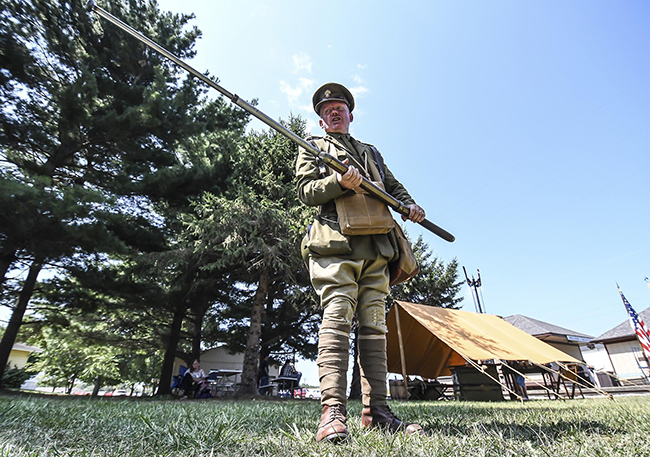Illinois Sent More Than 350,000 Soldiers to Europe During World War I

CLAY JACKSON, HERALD & REVIEW
Great War Living History Enthusiast Ian Houghton talks about Britain’s involvement in World War I during the World War I Encampment at Monticello Railway Museum on Aug. 19, 2017. The event, sponsored by the Monticello Railway Museum and the Illinois State Military Museum, signified the departure of Illinois Army National Guard troops to Camp Logan, Texas, for mobilization training from September to October 1917.
•November 7, 2018•
By Tony Reid
Of the Herald & Review
Artie Bennett, a Marine from Clinton, was cut down by a hail of bullets 100 years ago in a far-flung foreign field, giving his life for his country in America’s first global war.
A letter home from a fellow soldier said Bennett, 18, had been attacking a machine gun nest as the Marines fought, successfully, to stem a German advance threatening the French capital of Paris in June 1918, the last summer of World War I.
The fallen Marine had lingered for an hour before dying, one of the first casualties from Illinois. The letter honoring him, typed by fellow Marine Pvt. John W. Olsen, read: “He passed away quietly, without a complaint, and was laid to rest near where he fell.”
Immaculately tended American cemeteries in France, and faded memorials at home, are among the few tangible reminders of the “Great War” that began on July 28, 1914, and ended, after 18 million soldiers and civilians had died on all sides, with an armistice that went into effect at 11 a.m. on Nov. 11, 1918.
Login or Subscribe to read the rest of this story.
